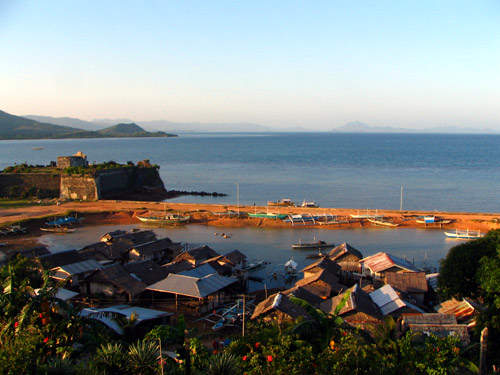The Galoc oil field is situated 60km north-west of Palawan in the Department of Energy (DOE) service contract SC14-C. The 35º API Galoc crude is present in a reservoir consisting of turbidite sandstones. It is the first discovery in a sandstone reservoir in the Philippines; previous commercial production has taken place in limestone reservoirs.
The oil field was discovered in 1981 and a further appraisal was undertaken in 1988. The water depth ranges between 290m to 400m at the Galoc field with the oil located in a turbidite sandstone reservoir at depth of approx 2,100m below the sea surface.
In December 2005 the plan for the development of the Galoc oil field was submitted to Philippine Department of Energy.
Development programme
Galoc Production Company proposed a phased development of the oil field. The plan included the construction of two subsea horizontal production wells, along with extended reservoir contracts. The flow from the well is controlled by FPSO (floating production, storage and offloading) along the onboard process facilities.
The mooring and riser system (M&RS) is used to offload hydrocarbons from a floating production vessel on to a tanker. It is based on a seabed anchor point and offers weather vaning up to 270º. The M&RS is provided by Rubicon Offshore International under an operated lease service contract.
In 2006, development of the Galoc field commenced with a contract for the drill rig. The development plan is to initially undertake an extended production test to confirm potential and then optimise production from the Galoc reservoir.
Phase 1 involved activities such as initial connection of the M&RS, and commissioning of the subsea system and process facilities.
The drilling of two horizontal wells, one into each of the two main channels, for economic rates of production and maximisation of recoverable reserves was included in phase 1. The wells will have about 1,600m of reservoir contact in each channel. The two wells are expected to have the capacity to produce about 25,000 barrels of oil per day.
The next phase of development involves activities such as well construction, installation of flowline and umbilical, and connecting the FPSO.
Well construction
The new Galoc-3 and Galoc-4 wells will be drilled from a single wellhead cluster location in about 290m of water. Galoc-3 will target the Roo 1 channel system and Galoc-4 will hit the Roo-2 channel. Horizontal penetration of 1,600m is planned but actual well lengths may vary depending on the quality of reservoir.
The well is designed conventionally. The subsea tree system would be configured for diverless installation and flowline.
The Galoc oil field commenced oil production in October 2008. The reserve estimate in Galoc is about 10 million barrels based on an assessment in 2006 for a two-well development.
Reserve estimates and requirements would be reassessed later, taking into account initial production performances.
Recent updates
The project restarted production in February 2009 after a temporary shutdown from December 2008 onwards due to adverse weather and FPSO equipment availability. Extensive work was undertaken to reinstate the FPSO contractor’s Mooring and Riser system (M&RS) and implement enhancements to ensure improved future performance. Improvements include a hold-back mooring system – a secondary mooring arrangement linked to the FPSO stern – and big changes to the primary M&RS, such as the improvement of critical attachments, installation of additional buoyancy to facilitate lay-down following disconnection, and the revision of related procedures.
In June 2009, extended tests undertaken at the project field ended. Production will continue from two wells while the potential for additional development is assessed. The assessment will consider the performance of the reservoir, production facilities and uncertainty surrounding oil prices in the next three to six months.
Further interruption
On 1 July 2009, Galoc Production Company said that a delay in reconnection of FPSO following the disconnection had occurred due to the misorientation and deformation of the mooring and riser system connecting the FPSO to the seabed and subsea wells. As a remedial measure, an offshore construction vessel was mobilised to the field.





